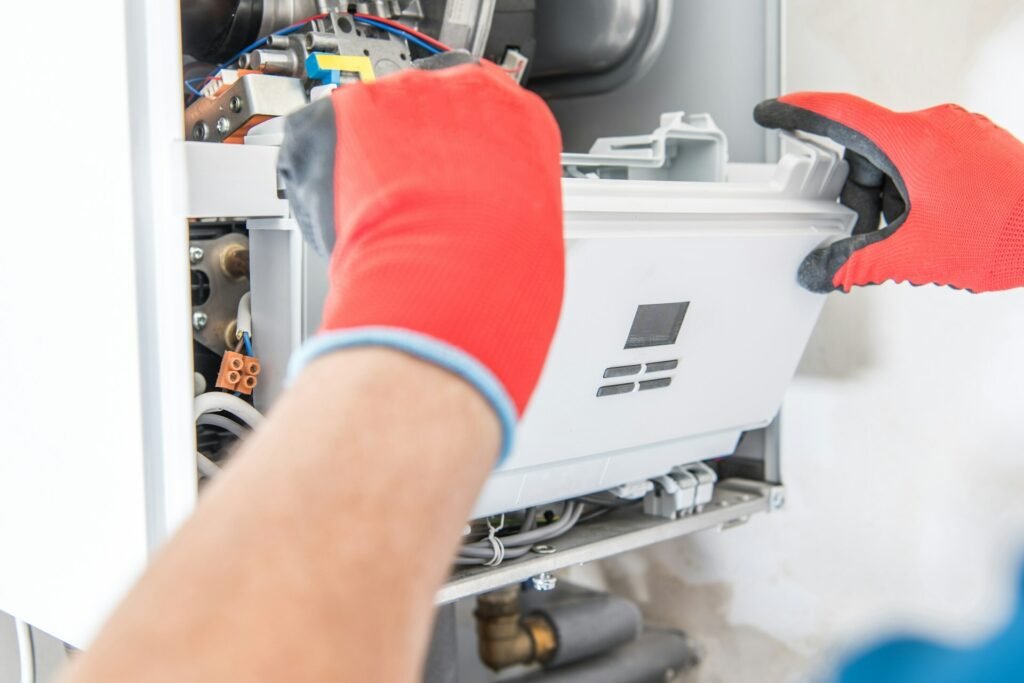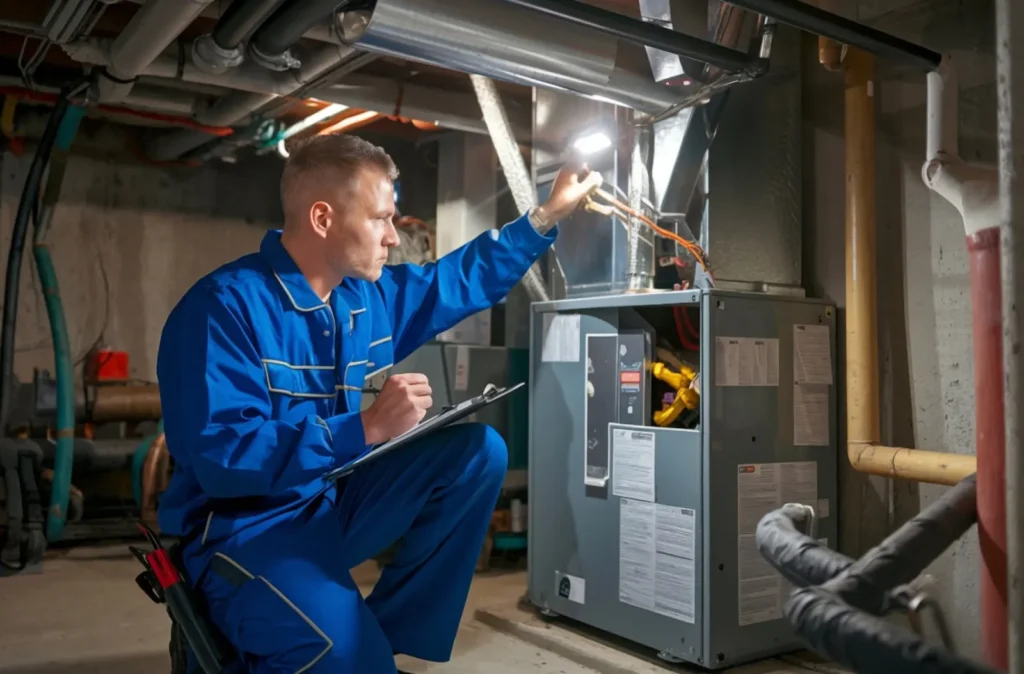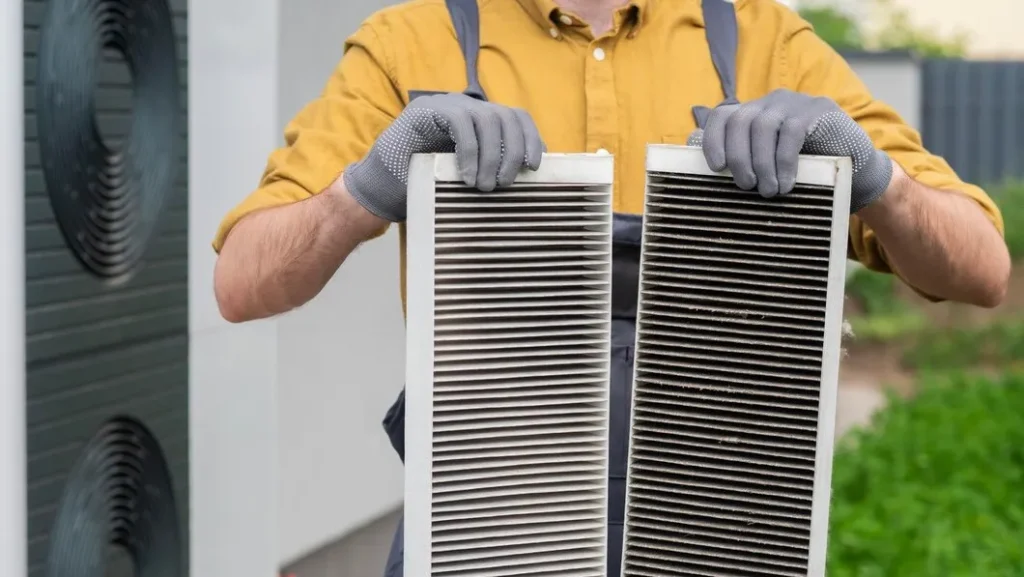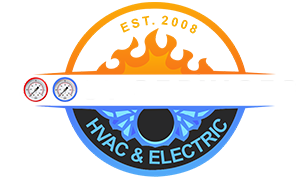Ensuring your home’s heating system works efficiently is crucial, especially as temperatures dip. When your heater stops working, it can be frustrating and uncomfortable. Thankfully, there are several Quick Fixes for Heating Problems at Home you can try before calling in professional help. This guide offers practical solutions to common heating issues, helping you maintain a warm and comfortable home environment.

Table of Contents
Identify the Problem
When your heater isn’t working, it’s essential to understand the root of the problem. Common issues include the heater not turning on, the furnace not kicking on, or the heat not coming on in the house. Let’s delve deeper into these problems and how you can address them.
If Your Heater Won’t Turn On
If your heater won’t turn on, start by checking your thermostat. Ensure it’s set to the correct mode (heat) and that the temperature setting is higher than the current room temperature. Sometimes, a thermostat can lose its programming, so reprogram it and see if this resolves the issue. Also, check for any loose wires or connections that might be affecting its functionality.
Another reason could be a tripped circuit breaker. Locate your home’s electrical panel and check the breaker for the heating system. If it’s tripped, switch it back on. If it trips again, consult a professional as this indicates a more severe electrical issue. It’s also wise to inspect the circuit breaker itself for any signs of wear or damage.
Additionally, examine the power switch on your heater. Occasionally, this switch can be inadvertently turned off. Ensure it’s in the “on” position. If your heater still doesn’t turn on, the issue may lie deeper within the unit, requiring professional attention.
If the Furnace Isn’t Kicking On
A common issue is the furnace not kicking on. This could be due to a clogged air filter. A dirty filter restricts airflow, causing the furnace to overheat and shut down. Check and replace the air filter if necessary. Regular filter changes are vital for maintaining your furnace’s efficiency. Make it a habit to inspect filters monthly and replace them as needed.
Also, inspect the furnace’s pilot light or electronic ignition. If the pilot light is out, follow your furnace’s manual to relight it safely. For electronic ignitions, ensure they’re functioning correctly. If you’re unsure, it’s best to contact a professional. Additionally, check for any gas leaks around the pilot area, as they can prevent the light from staying lit.
Furthermore, listen for any unusual noises when attempting to start the furnace. Rattling or banging sounds can indicate a mechanical issue that needs addressing. If any unusual sounds persist, it’s advisable to seek professional help to avoid further damage.

If the Heat Isn’t Coming On Throughout the House
If your home’s heat isn’t coming on, verify that the gas supply to the furnace is open. An accidentally closed gas valve can prevent the furnace from operating. Additionally, ensure that the blower motor is running. If it’s not, there could be an issue with the motor or the run capacitor. Regularly lubricating the motor can prevent these issues.
Sometimes, the problem could be as simple as a blocked air vent. Check all vents to ensure they are open and unobstructed. Closed or blocked vents can affect air distribution throughout your home. Dust and debris can accumulate over time, so regular cleaning is recommended.
Consider the possibility of a malfunctioning thermostat as well. If your thermostat is old or faulty, it might not signal the furnace to turn on. Ensure it’s calibrated correctly and replace it if necessary. Smart thermostats can offer more precise control and energy savings.
DIY Thermostat Fixes
While some heating issues require professional intervention, there are a few DIY fixes you can attempt to restore warmth to your home.
A simple yet often overlooked fix is replacing the thermostat batteries. Dead batteries can cause the thermostat to malfunction, preventing the heater from turning on. Replace the batteries and see if this resolves the issue. Additionally, clean the battery contacts to ensure a good connection.
Sometimes, resetting the thermostat can also solve minor issues. Refer to your thermostat’s manual for specific reset instructions. This can help clear any temporary glitches or malfunctions.
If problems persist, consider upgrading to a programmable thermostat. These devices provide better control over your heating schedule and can improve overall system efficiency.
Resetting the Furnace and Safety Checks
Resetting the furnace can sometimes fix minor glitches. Locate the reset button on your furnace, typically found on the blower motor. Press it and wait for the furnace to restart. If it trips again, refrain from repeated resets and call a professional. Overuse of the reset button can indicate a deeper issue that needs addressing.
In addition, check the furnace’s safety features. Ensure that all safety switches are in the correct position. These switches are designed to protect the unit from overheating or other hazards.
Another tip is to inspect the furnace’s condensate drain for blockages. A blocked drain can cause the system to malfunction, and clearing it may resolve the issue.
Clean or Replace Air Filters
Dirty air filters are a common culprit for heating issues. Regularly clean or replace your air filters to ensure optimal airflow and furnace efficiency. This simple maintenance task can prevent many heating problems. Set a reminder to check filters monthly during peak heating seasons.
Consider upgrading to high-efficiency filters. These can improve air quality and extend the life of your heating system by capturing more dust and debris.
Remember to also check the filter slot for any loose debris or obstructions. Keeping this area clean will ensure the new filter functions optimally.

When to Call a Professional
If you’ve tried the above fixes and your heater still isn’t working, it might be time to call in a professional. Issues like repeated circuit breaker trips, malfunctioning blower motors, or gas supply problems require expert attention.
Repeated circuit breaker trips can indicate a complex electrical problem. This is not only a nuisance but can also pose a safety hazard. A professional electrician can diagnose and repair the issue safely and effectively.
Additionally, if you notice any burning smells or smoke, turn off your heating system immediately and call a professional. These symptoms can indicate serious electrical faults that need urgent attention.
A malfunctioning blower motor can severely impact your heating system’s performance. If you’ve checked the basic components and the motor still isn’t running, professional help is necessary. They can perform a detailed inspection and replace any faulty parts.
Look for signs of wear on the motor or unusual noises, as these can be early indicators of a problem. Regular servicing can prevent blower motor issues and keep your system running smoothly.
Gas supply issues are critical and should always be handled by professionals. If you suspect a gas leak or notice the smell of gas, evacuate your home immediately and contact emergency services. Once it’s safe, a professional can assess and repair any faults with your gas supply.
Regular inspections of your gas lines and connections can prevent leaks and ensure your heating system operates safely. Consider scheduling annual maintenance with a licensed technician.
Call BOOST SERVICES (Pasadena & Surrounding Areas)
If you’re in Pasadena or the surrounding areas, BOOST SERVICES is your trusted partner for all HVAC needs. Our team is dedicated to providing top-notch customer service and satisfaction. Don’t let heating problems disrupt your comfort—call us today.
Contact us at:
- 818-277-5056
- 747-264-6358
We’re ready to serve you quickly and ensure your home remains warm and comfortable. Remember, regular maintenance and timely interventions can prevent many common heating issues and extend the life of your heating system.
Keep Your Home Comfortable
Heating problems can be a hassle, but with some knowledge and a few handy tips, you can often solve these issues yourself. However, never hesitate to contact professionals when needed. At BOOST SERVICES, we are here to help you maintain a cozy and inviting home environment. Trust in our expertise, reliability, and community-oriented service to keep your heating system in top shape.
Stay warm and comfortable with BOOST SERVICES—your local HVAC experts committed to excellence and customer satisfaction. Regular check-ups and prompt repairs will ensure your heating system runs efficiently, keeping your home comfortable all season long.
FAQ — Quick Fixes for Heating Problems at Home
My heat will not turn on. What should I check first?
Confirm the thermostat is set to Heat and a temperature above room level, replace thermostat batteries, ensure the system has power, and check for a tripped breaker or switched-off furnace/air handler.
Which quick fixes solve many heating problems fast?
Try these basics:
- Replace a dirty air filter
- Open all supply and return vents
- Reset a tripped breaker once
- Power cycle the system for 5 minutes and restart
- Check thermostat batteries and settings
The furnace runs but blows cool or not-warm-enough air. Why?
Likely causes include a clogged filter, overheating and limit switch cycling, a failing igniter, gas supply issues, or heat pump defrost mode. Start with a new filter and verify proper airflow.
How do I quickly improve weak airflow from vents?
Replace the filter, open blocked vents, move furniture away from returns, and check that the blower door is fully closed. Persistent weak airflow may require professional duct or blower inspection.
My furnace short cycles (starts and stops frequently). Any quick steps?
Install a fresh filter, make sure vents are open, and verify the thermostat is not in direct sun or near heat sources. If short cycling continues, a technician should check limits, flame sensor, and gas pressure.
What should I try when the thermostat seems unresponsive?
Replace batteries, confirm the date/time and mode, gently reseat the thermostat on its subbase, and check that the furnace door switch is engaged so low-voltage power is present.
The furnace will not ignite. Are there safe homeowner checks?
Set Heat mode with a higher setpoint, confirm the gas valve is on, and listen for the igniter sequence. Do not keep resetting the system repeatedly; if ignition fails, call a professional.
How can I quickly address cold spots in certain rooms?
Open and balance vents, remove obstructions, replace the filter, and run the fan setting on Auto. Persistent imbalances may indicate duct leaks or sizing issues that need professional correction.
What if I smell burning or a strong chemical odor when heat starts?
A slight dusty odor at first start is common. Strong burning, electrical, or chemical smells are not normal—turn the system off and call a technician immediately.
The breaker keeps tripping when the heat runs. What now?
Reset once only. Repeated trips indicate an electrical fault, seized motor, or short. Do not keep resetting—schedule professional diagnosis for safety.
Can I clean a flame sensor as a quick fix?
A dirty flame sensor can cause shutdowns. Cleaning is a common repair, but for safety and warranty reasons it is best handled by a professional during a service call.
What quick steps help if my heat pump struggles in cold weather?
Replace the filter, clear snow or debris from the outdoor unit, ensure at least 24 inches of clearance, and verify the thermostat is set for heat pump operation with auxiliary heat as needed.
How do I stop the furnace from making loud rattling or banging noises?
Check for loose access panels and ensure the filter is seated. Loud or new noises can signal mechanical or combustion issues—turn off the system and call a pro if noises persist.
Are there quick fixes for high heating bills without losing comfort?
Install a fresh filter, lower the thermostat a few degrees, seal obvious drafts, close blinds at night, and use programmed schedules to reduce runtime when you are away or asleep.
When should I stop troubleshooting and call a professional?
Call immediately for repeated breaker trips, strong odors, smoke, visible flames outside the burn chamber, no ignition after basic checks, or water around the furnace or air handler.
What simple maintenance prevents heating problems?
Follow this seasonal checklist:
- Replace filters every 1–2 months in peak season
- Keep 24 inches of clearance around the furnace and returns
- Schedule an annual tune-up for cleaning and safety checks
- Verify thermostat operation and update schedules

